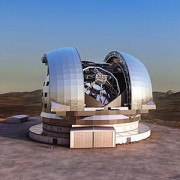ALPAO will supply a state-of-the-art high order deformable mirror to Observatoire de Paris. This mirror will have more than 3000 actuators that could move at a rate higher than 1000 times per second. This procurement is done in the scope of the instrumentation of the European Extremely Large Telescope (E-ELT), the largest telescope in the world with its 39m diameter primary mirror.
Observatoire de Paris is a world-leading institute in instrumentation, in particular in ground-based and high angular resolution instrumentation. Hence, LESIA and GEPI, the two laboratories involved in this project, have lead or have been major contributors to several instruments for the Very Large Telescope of the European Southern Observatory, such as FLAMES, NAOS, MIDI, SPHERE, and Gravity.
LESIA and GEPI are now involved in the instrumentation of the coming E-ELT. LESIA is leading the French contribution to MICADO (1), the E-ELT first light imager, and GEPI is the PI institute of MOSAIC (2), the E-ELT multi-object spectrograph.
The contract signed between ALPAO and Observatoire de Paris aims at procuring to LESIA and GEPI a state-ofthe-art deformable mirror, enabling Observatoire de Paris to strengthen its expertise in high angular resolution instrumentation and providing Observatoire de Paris with an essential equipment for the MOSAIC and MICADO projects.
This procurement has been made possible thanks to the support of the Region Ile de France and its program DIM ACAV as well as the support of the CNRS National Institute of Earth Sciences and Astronomy (INSU).
“This high order deformable mirror is a crucial equipment for us since it will bring us important information for the choice of the deformable mirrors for MOSAIC and it will allow us to validate, in France, the performance of the first-light adaptive optics of MICADO”, said Yann Clénet, Researcher at LESIA – Observatoire de Paris
“ALPAO deformable mirrors, thanks to its large deformation and high optical quality, are already in lead position in medical applications (ophthalmology and microcopy). With this new contract, we are delighted to consolidate ALPAO leadership for astronomical applications. We are also proud to cooperate and supply with a renowned historical observatory” said Vincent Hardy, General Manager of ALPAO.





Leave a Reply
Want to join the discussion?Feel free to contribute!